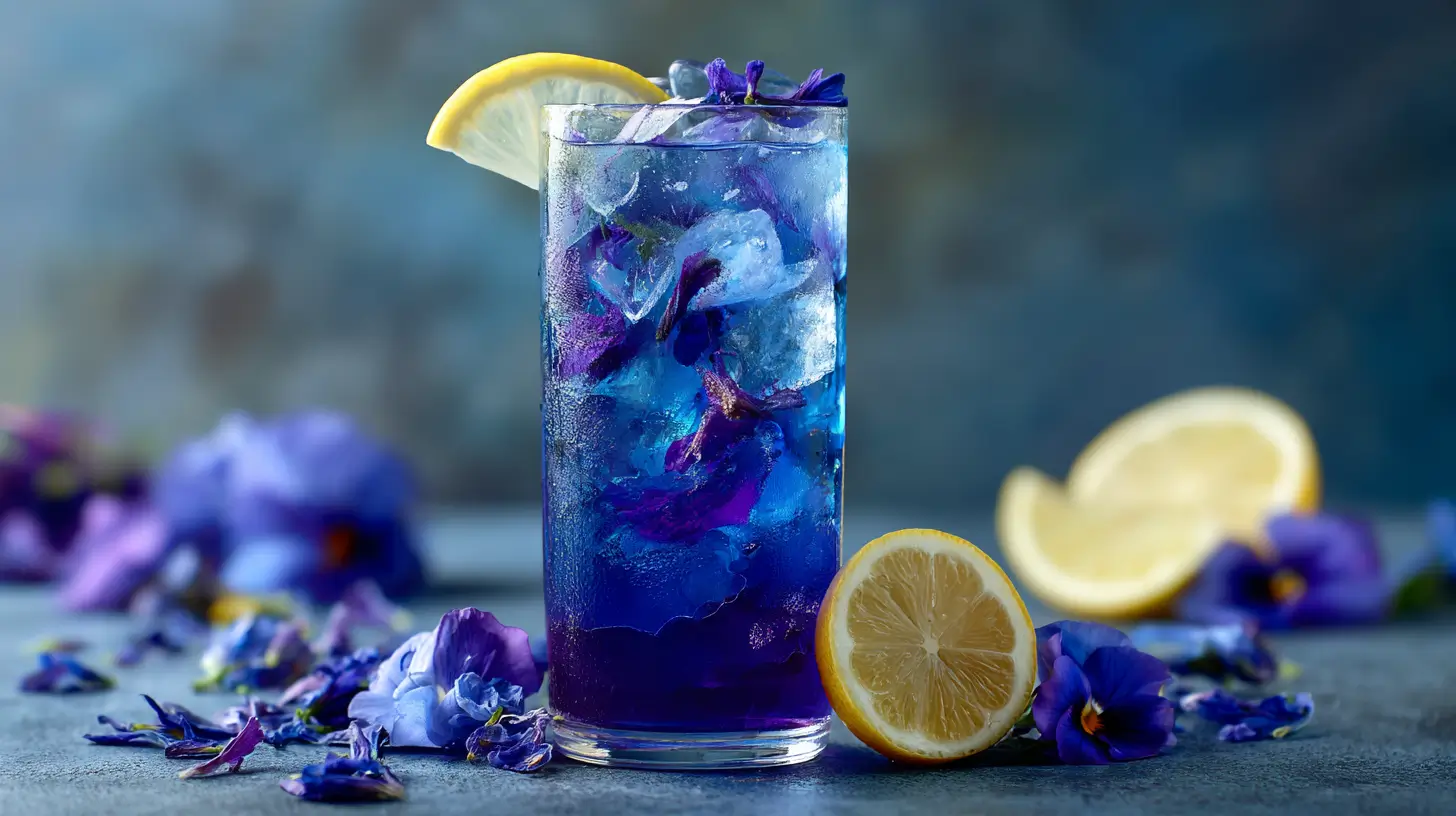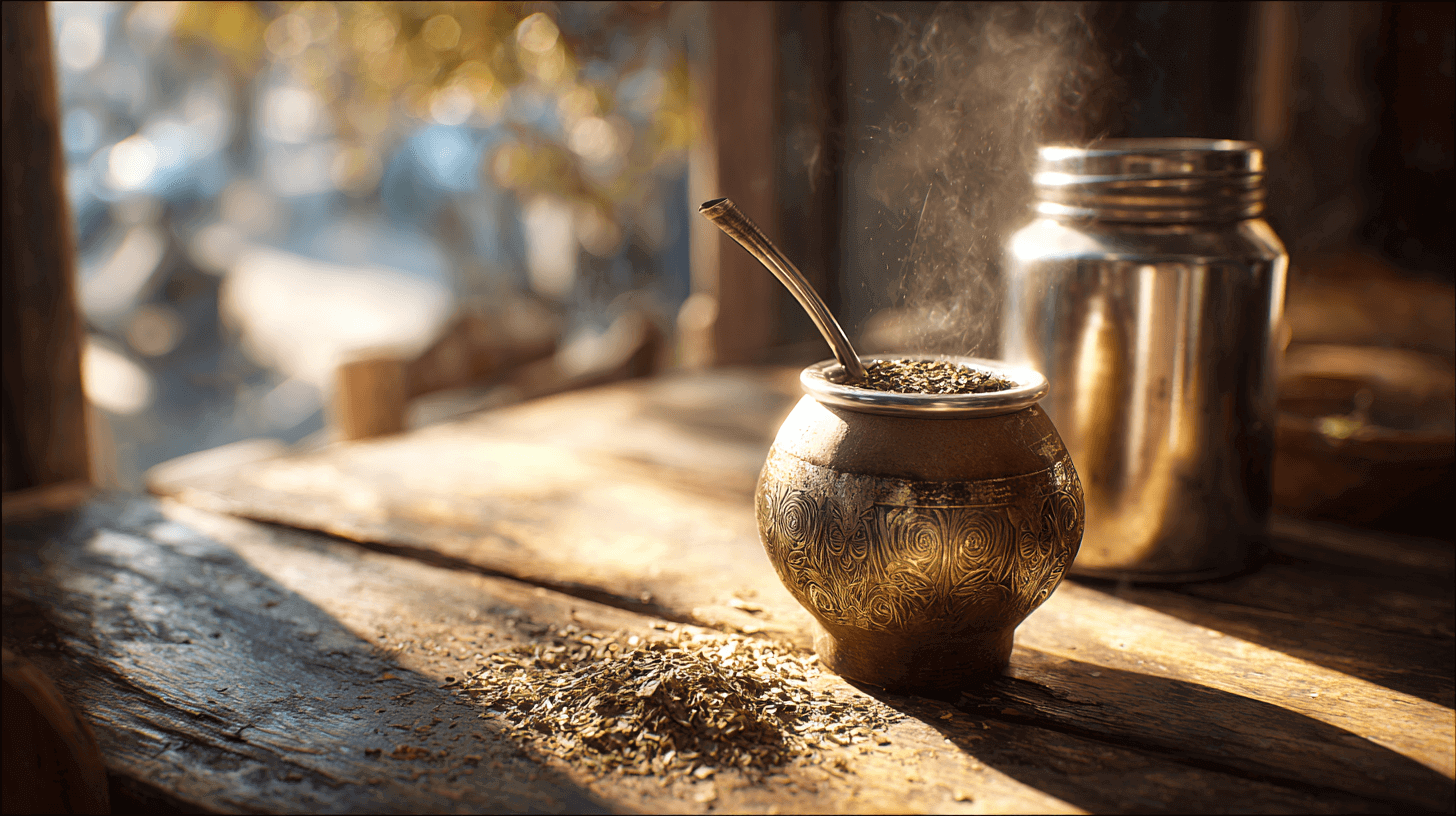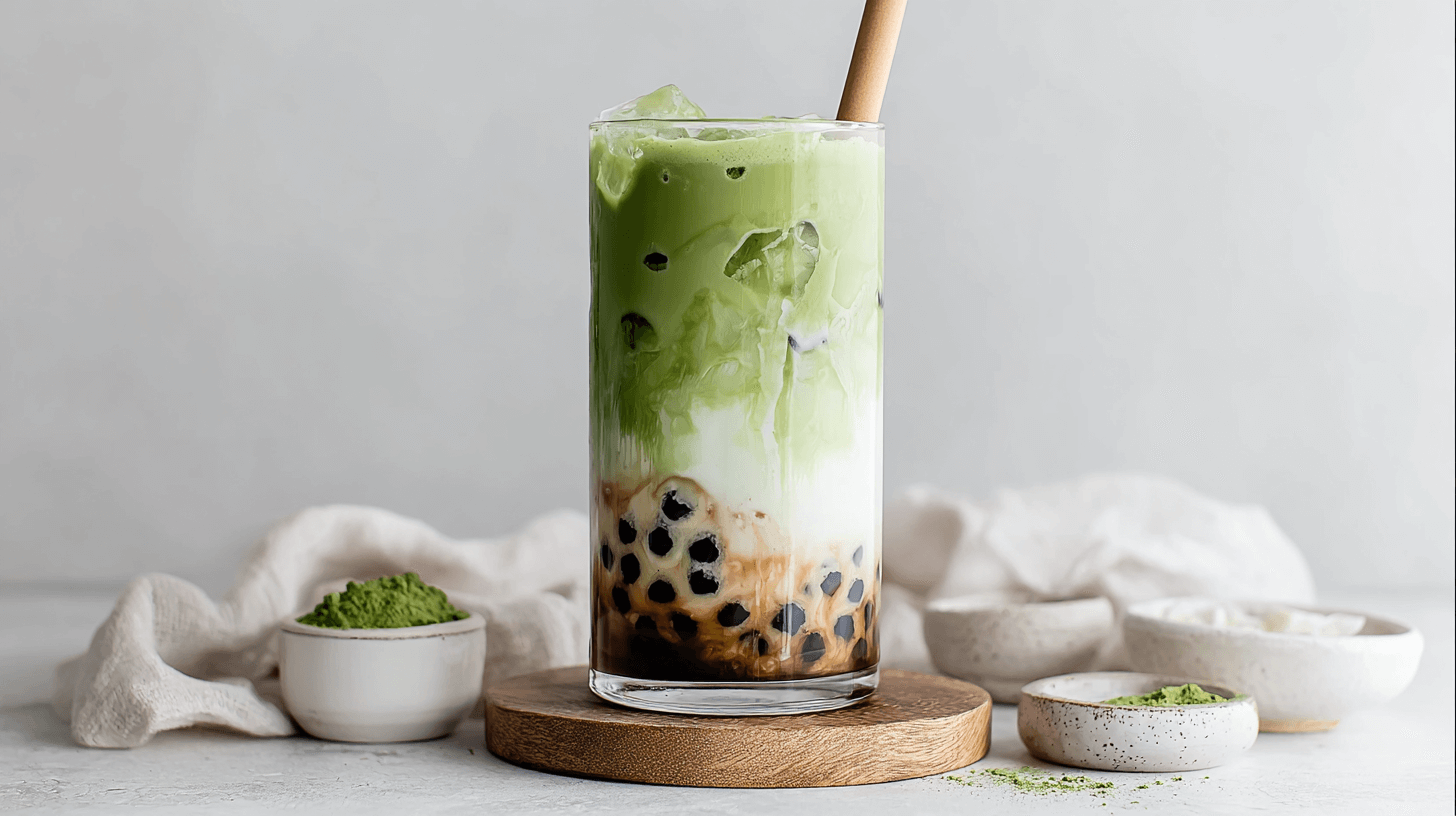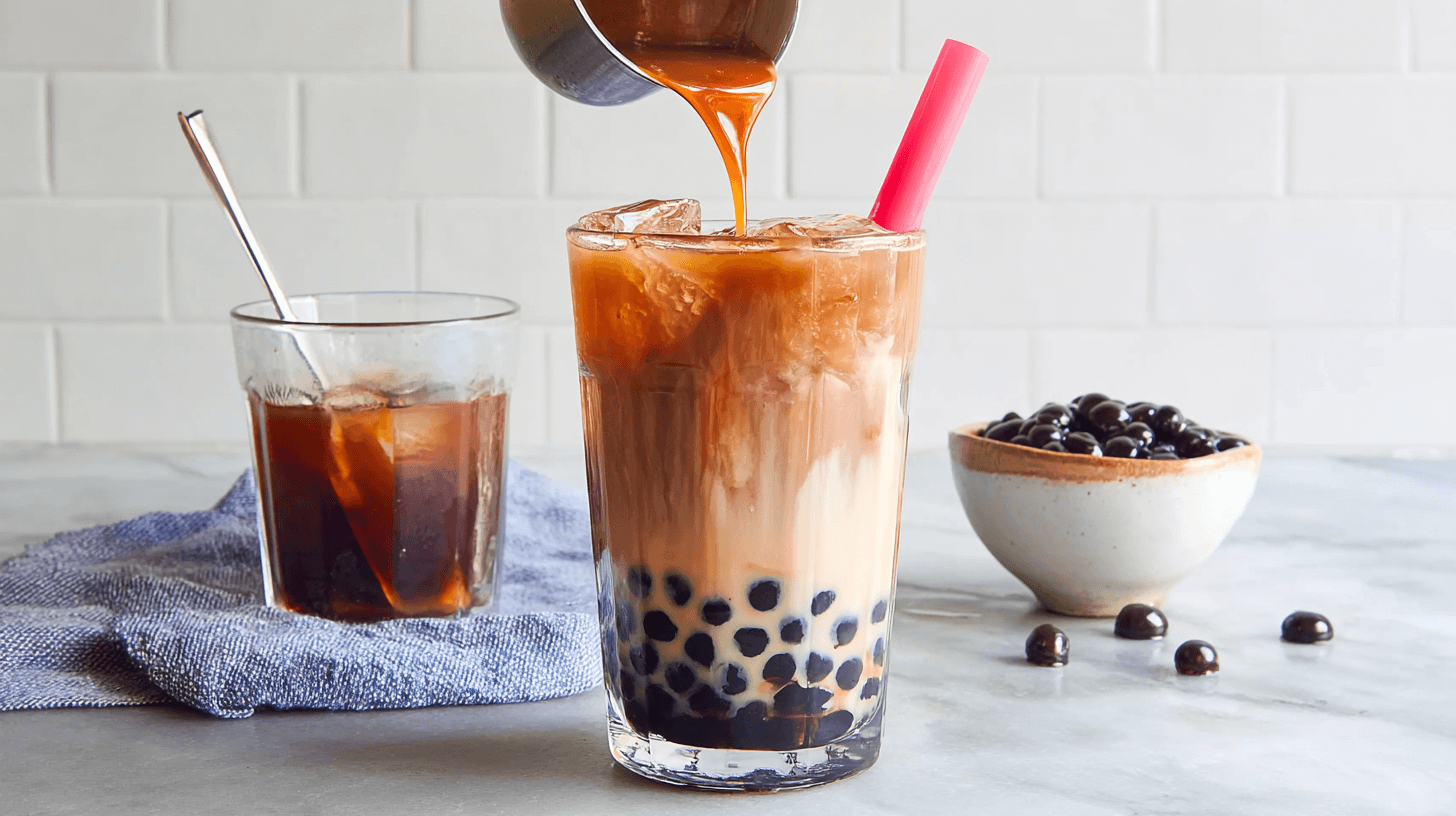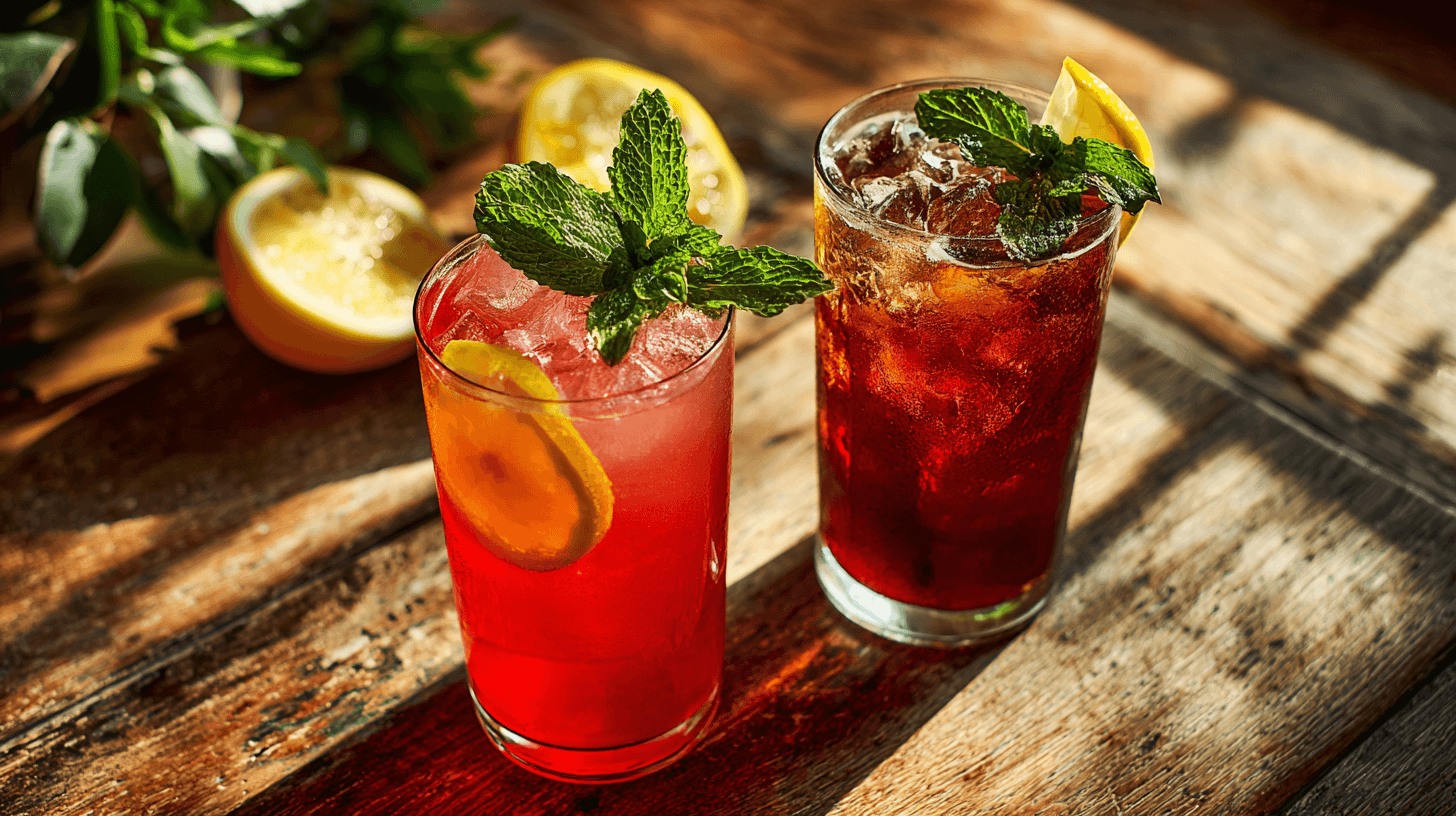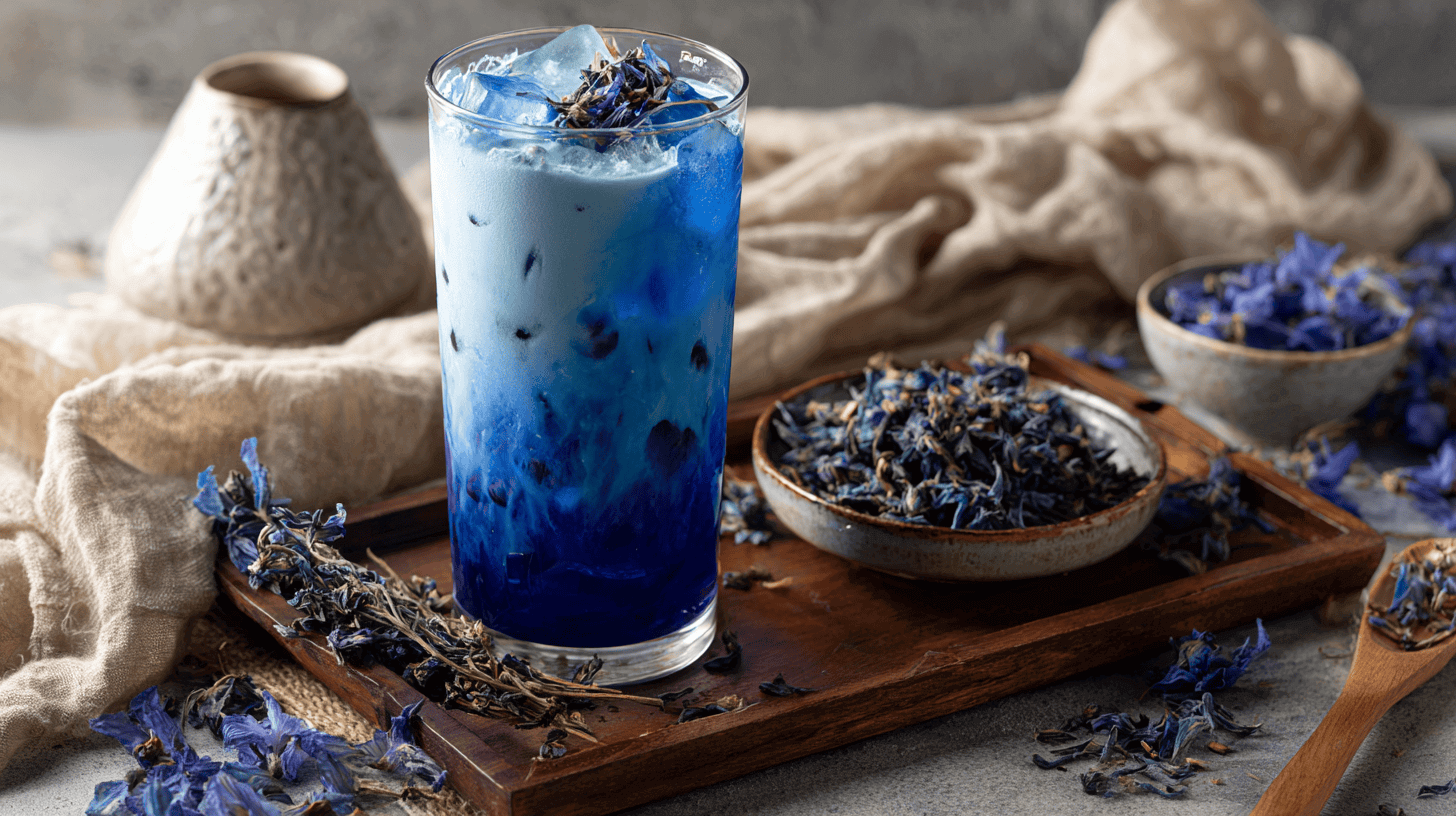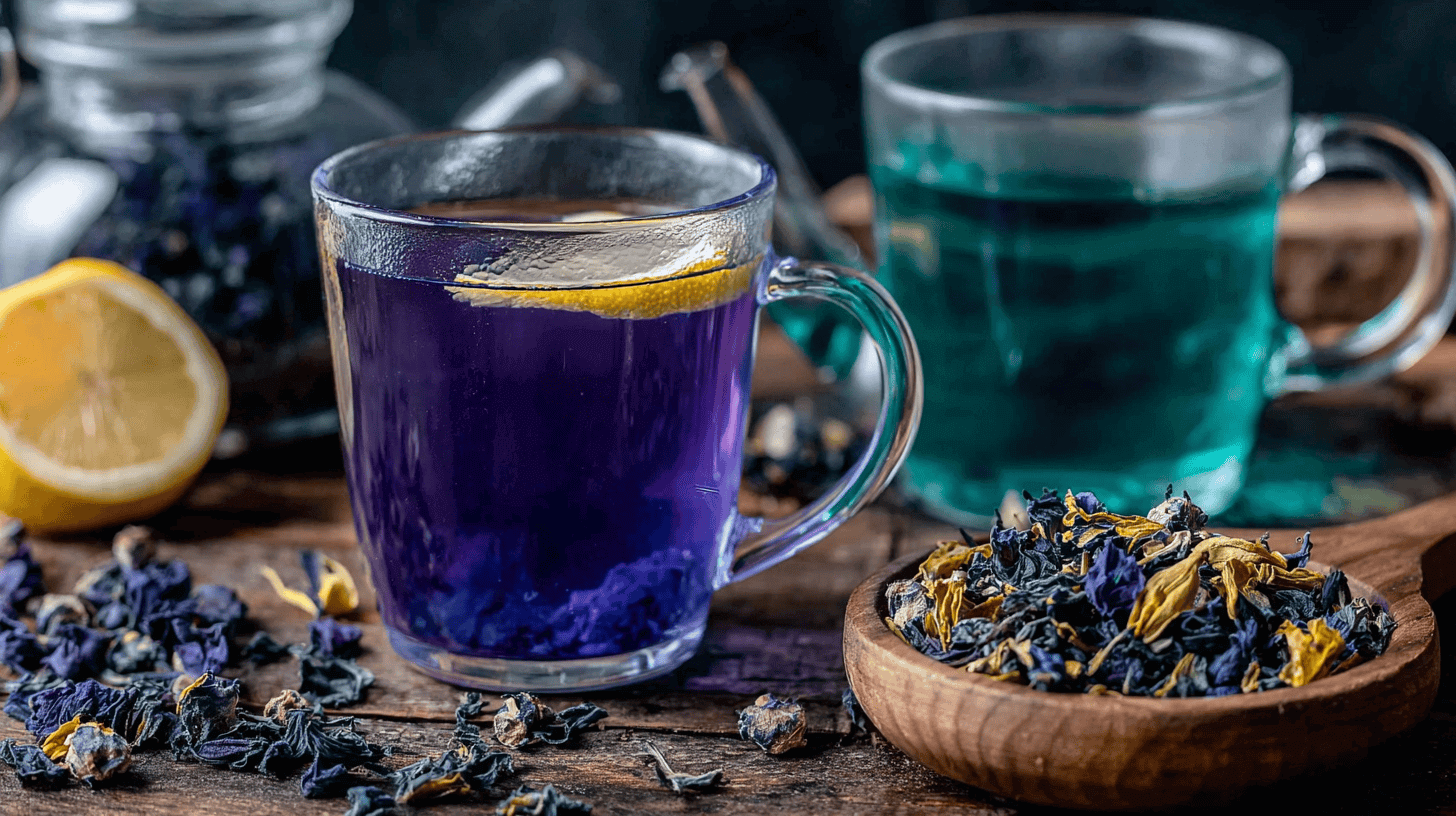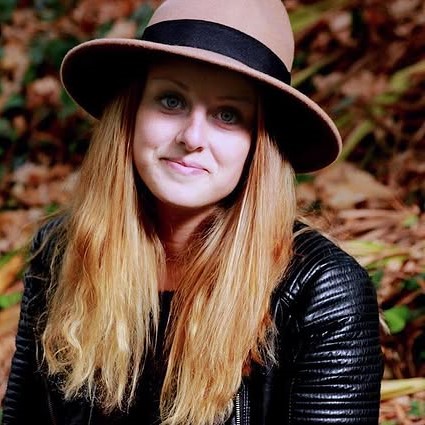Butterfly pea flower iced tea is more than just a drink it’s an experience. From its rich Southeast Asian roots to the jaw-dropping color transformation that turns blue tea to purple with just a squeeze of lemon, this herbal tea is TikTok-famous for good reason. In this article, I’ll show you exactly how to make butterfly pea flower iced tea that’s not only stunning but also packed with science-backed wellness benefits. We’ll cover variations like coconut butterfly boba, its uses as a natural dye, and why it’s the perfect caffeine-free summer drink. Ready to sip the most aesthetic drink on the internet?
Table of Contents
The Story Behind Butterfly Pea Flower Iced Tea
Why Butterfly Pea Flower Iced Tea Became My Go-To Summer Ritual
The first time I made butterfly pea flower iced tea, I was instantly hooked not just because of the hypnotic blue color, but the calming, earthy flavor that felt like spa water with personality. I discovered it during a summer trip to a Thai café where it was called nam anchan. Served chilled over ice and mixed with lemon juice, it changed from deep sapphire to a vivid purple before my eyes. It felt like magic, and I knew I had to recreate it at home.
Print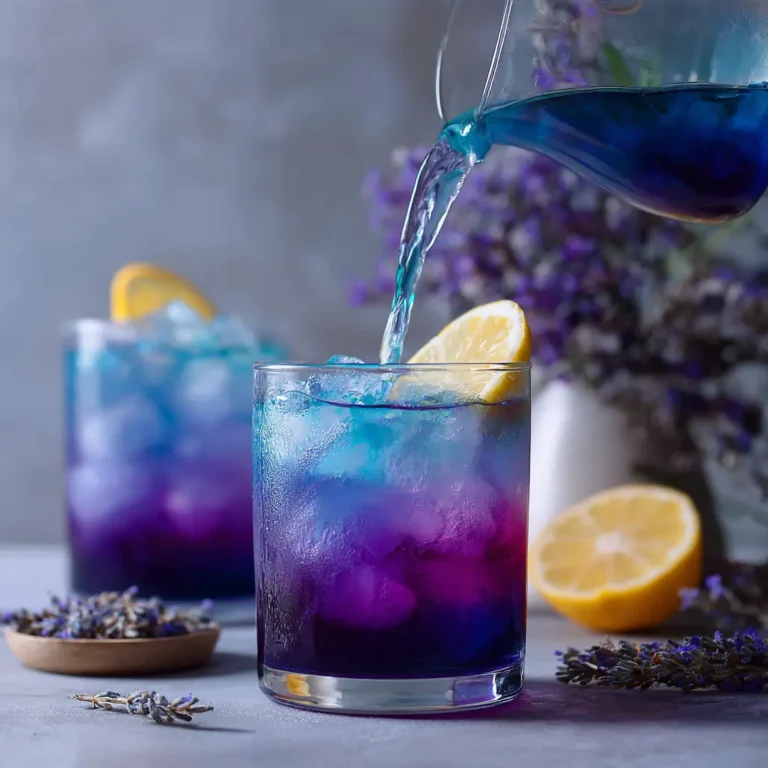
Butterfly Pea Flower Iced Tea Recipe: Stunning Blue-to-Purple Herbal Drink
Butterfly pea flower iced tea is a vibrant, caffeine-free herbal tea that changes color with lemon. Refreshing and antioxidant-rich, it’s perfect for summer.
- Total Time: 15 mins
- Yield: 2 servings 1x
Ingredients
1 tbsp dried butterfly pea flowers
2 cups hot water
1 tbsp lemon juice (optional for color change)
1 tsp honey or sweetener of choice
1/4 cup coconut milk or cream (optional)
Tapioca pearls (optional for boba version)
Ice cubes
Instructions
1. Steep butterfly pea flowers in hot water for 5–10 minutes.
2. Strain and let cool to room temperature.
3. Add lemon juice if desired for a color change.
4. Sweeten to taste with honey or preferred sweetener.
5. Pour over ice and top with coconut milk for a creamy version.
6. Add tapioca pearls to the bottom for boba tea variation.
7. Serve immediately with optional mint garnish.
Notes
Store extra tea in the fridge for up to 3 days.
Try freezing lemon juice into cubes to drop into blue tea for dramatic effect.
- Prep Time: 10 mins
- Cook Time: 5 mins
- Category: Drinks
- Method: Steeping
- Cuisine: Thai-Inspired
- Diet: Vegan
Nutrition
- Serving Size: 1 glass
- Calories: 45
- Sugar: 3g
- Sodium: 5mg
- Fat: 2g
- Saturated Fat: 1g
- Unsaturated Fat: 1g
- Trans Fat: 0g
- Carbohydrates: 6g
- Fiber: 0g
- Protein: 0g
- Cholesterol: 0mg
Fast-forward to today, this tea has a permanent place in my fridge. I use dried butterfly pea flowers for ease, but you can also grow your own (Clitoria ternatea). It’s my ultimate go-to when I need a relaxing, caffeine-free drink that still feels special and it’s one of my top crowd-pleasers when friends visit.
This guide will delve into the science behind its calming properties, linking traditional use to modern research confirming its anxiolytic (stress-reducing) effects.
The Flavor Enigma: What Does Butterfly Pea Tea Actually Taste Like?
Butterfly pea flower iced tea isn’t just visually captivating it’s also uniquely subtle on the palate. Unlike bolder herbal infusions, this tea delivers a delicate, layered flavor that many first-timers struggle to describe. It’s often labeled as “earthy,” but there’s more going on than that.
According to a 2021 phytochemical review published in the Journal of Ethnopharmacology, the flavor complexity of Clitoria ternatea is due in part to the presence of mome inositol, which contributes a soft, natural sweetness. You may also detect a whisper of nuttiness this comes from pentanal, a compound that gives the tea its slightly roasted, almost almond-like undertone.
When steeped hot and served chilled as butterfly pea flower iced tea, the cooling process smooths out any bitterness, leaving behind a clean, almost “green bean” or vegetal note. This is why the tea pairs exceptionally well with tart ingredients like lemon juice or citrus zest the acidity balances the mild, grounding flavor.
If you’re used to punchy teas like hibiscus or mint, butterfly pea flower iced tea might feel understated. But its quiet complexity is what makes it so versatile in drinks ranging from vegan boba tea to summer mocktails. Think of it as the chamomile of color-changing teas gentle, nuanced, and infinitely adaptable.
Aesthetic Meets Antioxidants: What Makes Blue Tea So Unique
Butterfly pea flower iced tea is prized for its dramatic appearance, but it’s not just for show. The blue hue comes from ternatins, a uniquely stable class of antioxidants called anthocyanins that react to pH. When acid (like lemon or lime) is added, the anthocyanins shift and the tea turns purple or pink depending on the concentration making it a favorite for viral videos and “Instagram aesthetic drinks.”
Unlike black or green teas, butterfly pea flower iced tea is completely caffeine-free, making it great for relaxation or late-night sipping. It also serves as a natural food coloring in traditional Thai and Malaysian dishes like nasi kerabu.
And if you’re looking to pair it with a naturally sweet refreshment, check out this cherry lime agua fresca a beautiful companion to your next tea session.
How to Make Butterfly Pea Flower Iced Tea at Home
Simple Ingredients, Stunning Results
Making butterfly pea flower iced tea is surprisingly easy. You don’t need any fancy equipment just dried butterfly pea flowers, water, and a few flavor options to personalize your brew. I prefer starting with about 1 tablespoon of dried butterfly pea flowers per 2 cups of hot water. Let it steep for 5–10 minutes until the color is deep blue and the flavor is floral with subtle earthy tones.
Once steeped, strain the flowers and let the tea cool to room temperature before chilling in the fridge. From there, the variations are endless. For a creamy twist, stir in coconut milk (or coconut cream) and a splash of sweetened condensed milk. This is the base for my butterfly pea milk tea, and it’s insanely good over ice.
To make it pop on social media, add lemon juice just before serving it instantly changes the blue hue to purple or violet, depending on how much citrus you use. This pH-based color reaction isn’t just fun to watch; it makes every glass feel like a tiny science experiment.
Recipe Variations You’ll Want to Try
The beauty of this herbal tea is its versatility. Try these ideas once you’ve mastered the basics:
- Butterfly Pea Lemonade: Mix with fresh lemon juice, honey, and ice for a tangy, refreshing drink with a striking purple color.
- Vegan Boba Tea: Add tapioca pearls and plant-based milk to create a colorful, caffeine-free version of boba tea.
- Blue Tonic Mocktail: Layer it with sparkling water and a citrusy electrolyte base like this electrolyte mocktail recipe for a vibrant non-alcoholic option.
- Coconut Cooler: Combine with coconut water iced coffee for a tropical fusion drink perfect for hot afternoons.
For a visually similar drink with a wellness focus, my blue spirulina smoothie offers a vibrant superfood option that pairs well with your tea ritual.
Benefits, Cultural Roots & How to Choose Butterfly Pea Flowers
From Ancient Wisdom to Modern Science: The Proven Benefits of Butterfly Pea Tea
Butterfly pea flower iced tea has long been praised in folk traditions for its calming and cognitive benefits. But unlike many trending herbal teas, it isn’t just folklore—it’s supported by a growing body of modern scientific research.
Traditional medicine systems like Ayurveda and Thai folk practices have used Clitoria ternatea (the botanical source of butterfly pea flower iced tea) for centuries. It was brewed as a brain tonic, used for wound healing, and even as a mood stabilizer. Today, researchers are uncovering how its bioactive compounds actually work inside the body.
Here’s how traditional use compares with modern scientific understanding:
| Benefit Claim | Traditional Context | Scientific Evidence & Bioactive Compounds |
|---|---|---|
| Cognitive Enhancement | Used in Ayurveda to improve memory and brain function | Studies show *Clitoria ternatea* increases acetylcholine levels in the brain, improving memory and learning [Mukherjee et al., *J Ethnopharmacol*, 2008] |
| Stress & Anxiety Relief | Used traditionally as a calming, sedative tea | Animal studies confirm anxiolytic and sedative effects via GABAergic activity [Jusoh et al., *Evidence-Based Complementary and Alternative Medicine*, 2019] |
| Antioxidant Power | Believed to protect against aging and fatigue | Rich in ternatins, anthocyanins, and flavonoids that neutralize free radicals [Bhaskar et al., *Biomedicine & Pharmacotherapy*, 2019] |
| Anti-Diabetic Potential | Used in traditional remedies to regulate blood sugar | Exhibits alpha-glucosidase inhibition and lowers glucose levels in animal models [Mukherjee et al., 2010] |
| Anti-Inflammatory Effects | Used for swelling and inflammation | Demonstrated reduction in inflammatory markers in lab models [Lee et al., *Phytomedicine*, 2017] |
Unlike many “trendy teas,” butterfly pea flower iced tea has both cultural credibility and biochemical support. While it’s not a cure-all, it offers legitimate support for mood, cognition, and inflammation and that makes it worth steeping into your daily wellness routine.
Additionally, if you are taking any medications, especially for blood pressure or blood sugar, it is wise to consult your doctor to avoid potential interactions.
Cultural Depth: From Southeast Asian Traditions to Viral Tea Trends
Before butterfly pea flower iced tea became a TikTok sensation, it had centuries of cultural value across Southeast Asia. Known as nam anchan in Thailand, this color-changing tea was traditionally used in drinks, desserts, and natural food coloring. It even holds symbolic meaning Thai folklore says the Kinnari, a mystical bird-woman, wept blue tears that became the butterfly pea flower.
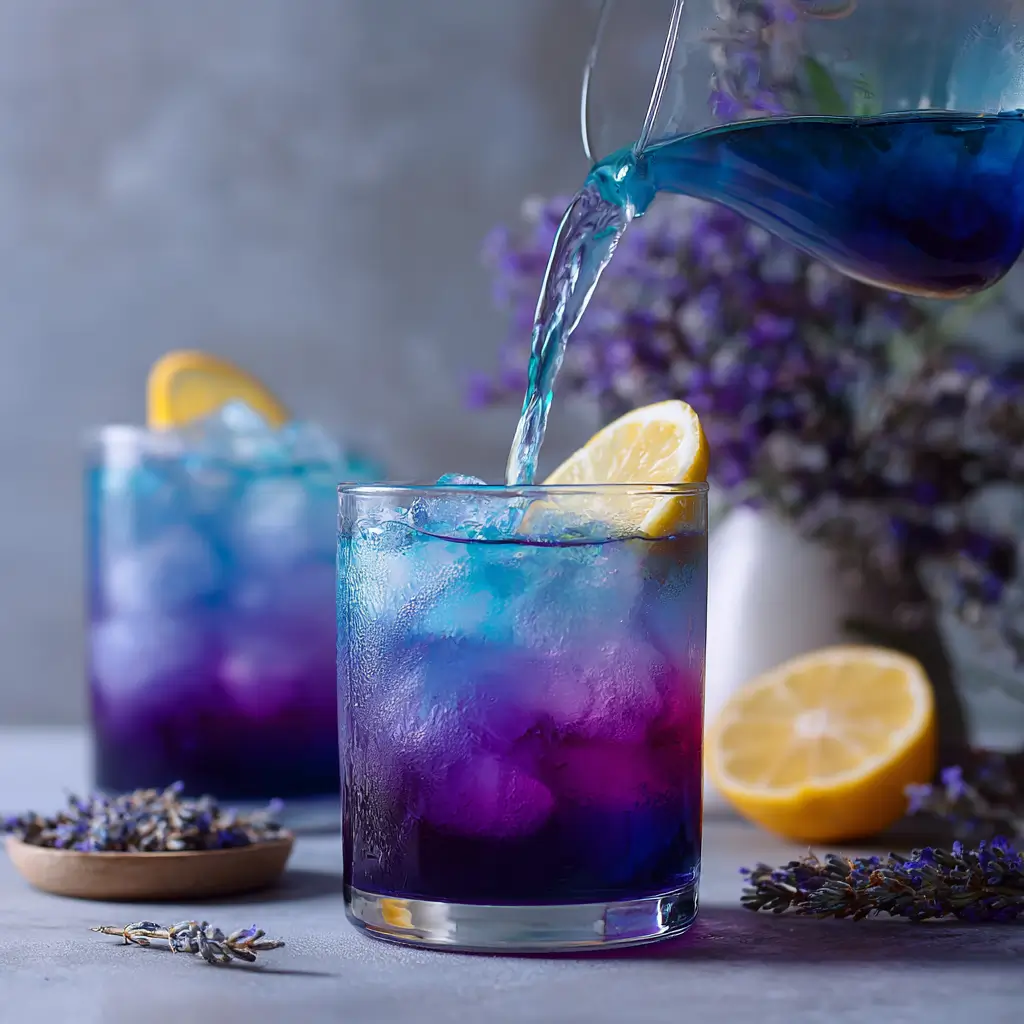
Malaysians often use it to color nasi kerabu, a signature blue rice dish. Adding this cultural story gives butterfly pea flower iced tea a layer of meaning that most trendy recipes skip entirely.
Serve it next to a vegan fruit dip for a modern twist on traditional tea service.
How to Pick High-Quality Dried Butterfly Pea Flowers
To get the best results from your butterfly pea flower iced tea, the quality of your dried flowers matters.
| Buyer’s Tip | What to Look For |
|---|---|
| Color | Bright, rich blue or blue-violet |
| Form | Whole, intact dried flowers |
| Sourcing | Organic or pesticide-free preferred |
| Packaging | UV-proof, airtight pouch or jar |
Once you’ve purchased your high-quality flowers, store them in an airtight, opaque container away from direct sunlight and moisture. This is critical for preserving the potent anthocyanin compounds and ensuring the tea retains its vibrant color-changing ability.
Conclusion
Butterfly pea flower iced tea is more than just a pretty drink it’s a celebration of tradition, wellness, and creativity. Whether you’re drawn to its vibrant blue hue, fascinated by the pH-based color change, or sipping it for its antioxidant-rich benefits, this caffeine-free tea is as functional as it is beautiful. You can keep it simple with lemon and ice or go all-out with a coconut milk swirl and tapioca pearls. However you serve it, butterfly pea flower iced tea is one of those rare recipes that checks every box: easy, visual, plant-based, and seriously fun.
I hope this guide helps you bring a little color and calm into your kitchen. Whether you’re crafting a viral blue milk tea or just winding down with something soothing and sugar-free, butterfly pea flower iced tea belongs in your summer drink lineup. And if Luna the Ragdoll cat approves from her corner perch, you know it’s a winner.
Love simple, healthy recipes like this?
Follow me on Pinterest and Facebook for fresh, easy meals straight from my kitchen to yours.
FAQs, Safety & Creative Serving Ideas for Butterfly Pea Iced Tea
Is It Safe to Drink Butterfly Pea Tea Every Day?
For most people, yes. Butterfly pea flower iced tea is generally safe when consumed in moderation. It’s caffeine-free, low-calorie, and contains no added chemicals when brewed from dried flowers. That said, some may experience mild digestive upset (like nausea), especially when drinking it on an empty stomach.
Pregnant or breastfeeding? It’s best to consult a healthcare provider. Butterfly pea (Clitoria ternatea) has traditional medicinal uses that affect the uterus in some animal studies, so professional guidance is key.
Answers to the Most Asked Questions About Butterfly Pea Tea
Can you drink butterfly pea flower tea cold?
Absolutely. It’s perfect as a chilled summer drink. After steeping, just refrigerate and pour over ice. Many people prefer it cold because the earthy flavor is smoother and it pairs well with fruits or plant-based milk.
What does butterfly pea tea taste like?
Mild, earthy, and slightly woody. It’s less floral than hibiscus or chamomile and blends well with coconut milk, lemon juice, or honey. When sweetened and chilled, it’s incredibly refreshing.
What is butterfly pea iced tea?
It’s a cold herbal tea made from steeped dried butterfly pea flowers. Known for its deep blue hue and color-changing abilities, it’s caffeine-free and often served with lemon or plant-based milk for visual effect and flavor balance.
What does butterfly pea tea do for you?
Butterfly pea tea is rich in antioxidants like anthocyanins, which studies suggest may support cognitive health by enhancing memory, reduce inflammation through its flavonoid content, and help manage blood sugar levels by inhibiting glucose absorption. It’s also known for its calming properties, making it a popular caffeine-free choice for stress relief and relaxation.
What are the disadvantages of butterfly pea tea?
Side effects are rare but may include mild stomach upset. It may interact with medications for blood pressure or blood sugar, so consult a doctor if you’re on prescription meds. Avoid in pregnancy without medical advice.
Serving Ideas That Go Viral (But Actually Taste Great)
Here’s how to serve your butterfly pea iced tea for full flavor and maximum visual impact:
Color-Changing Lemonade Ice Cubes: Freeze lemon juice in ice cube trays and drop into blue tea for instant purple swirls.
Blue Coconut Swirl: Pour chilled tea over coconut cream, then top with sweetened condensed milk for a creamy TikTok-worthy treat.
Layered Vegan Boba Tea: Add boba pearls to a tall glass, layer with blue tea, then gently pour in sweetened plant-based milk for contrast.
Garnish Game: Use mint sprigs, butterfly pea flowers, or edible gold flakes to take it next level.
